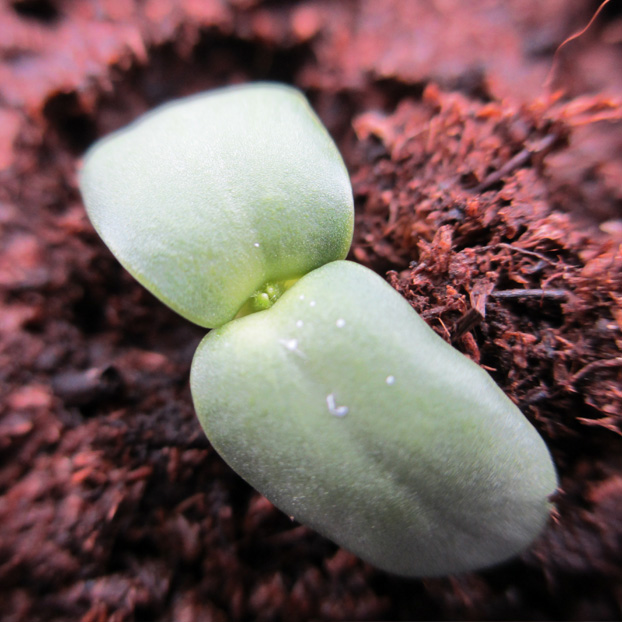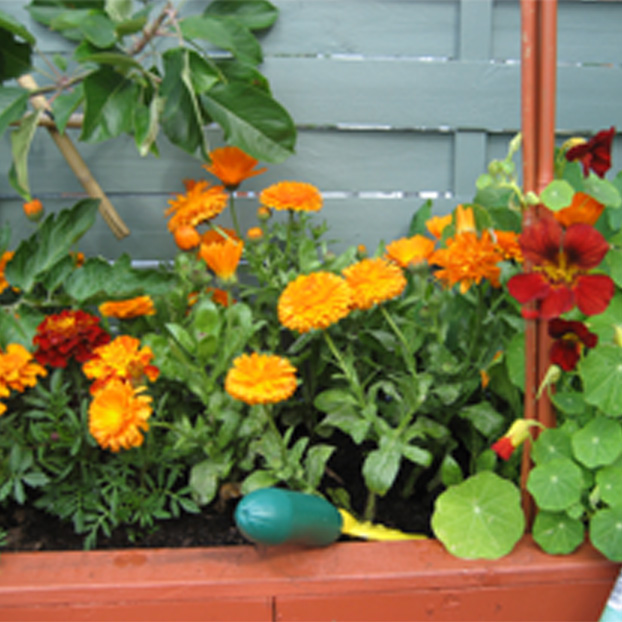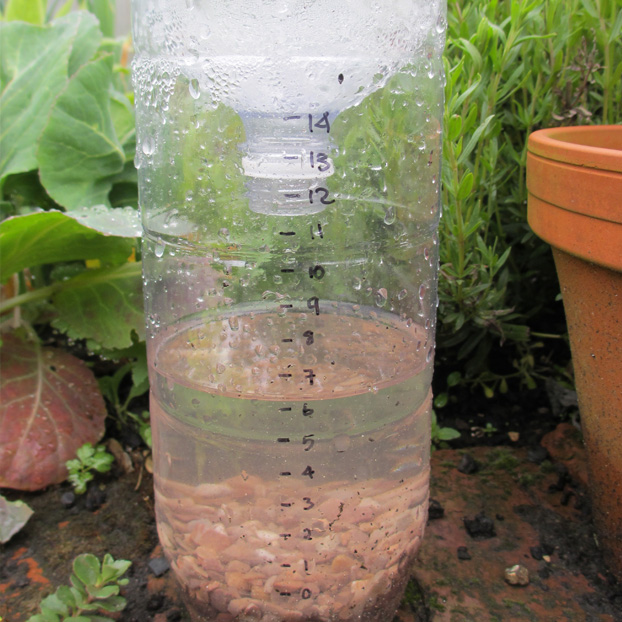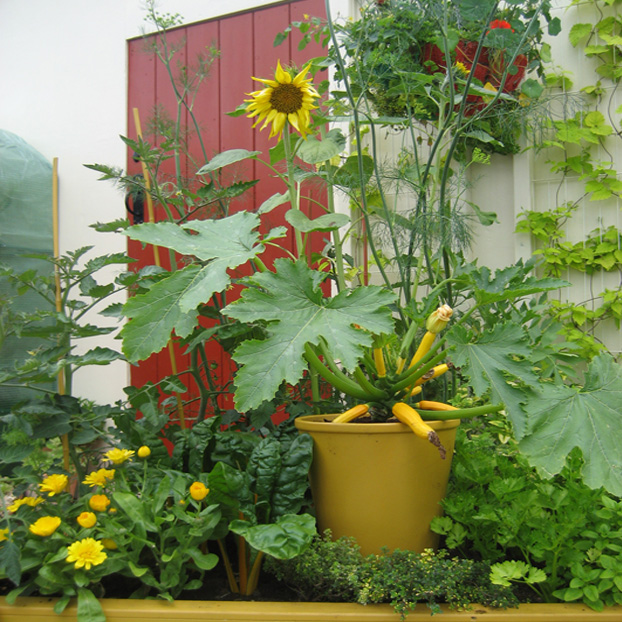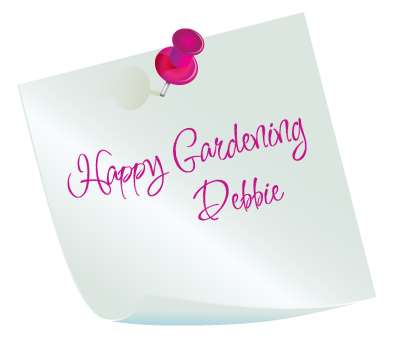Never 2 young to Garden!
January 22, 2015 7:25 pm Leave your thoughtsI’m often asked about gardening with children, one of my award winning gardens was designed specifically for children. I believe that you’re Never 2 Young to Garden.
I say this because I know of a delightful two year old that waters the plants on her balcony. She can just about manage the mini watering can. She was seen to sprinkle what little water remained in the can on the herbs and veg seedlings, accidentally spilling a little onto the patio chair. “Wet! Wet!” she declared. “Well go and get a tea towel to dry it” said Mum. Off she ran, (she runs everywhere), and promptly returned with said tea towel to dry the chair as best as a two year old can.
She may not understand what this growing lark is all about. She’s not so young, however, that she can’t get very excited about what’s happening on her balcony.
They’re fortunate to be living in warmer climate than ours. The current temperatures are comparable to May /June in the UK. This means that their growing season is well under way. The lettuce seeds I gave them at New Year are already showing their heads.
So take heart and think ahead, what can you get up to in the garden with the children this year?
I thought I’d share with you some ideas I’ve come across to help get your little ones growing.
Make it fun, make it theirs!
Make it Fun
Make weeding and watering fun and exciting with rewards of the fun stuff like bug hunting, checking the water catcher or eating the fruits of their labour.
Short term Rewards:
Watching for seedlings to emerge:
Nothing’s more thrilling than seeing the first signs of green emerging from the brown compost and knowing you helped that to happen… Wow!!! “Sorry but I still get excited when seeds actually grow”
Bug Hunting:
Grow plants to attract insects so you are guaranteed to see something.
French and Pot Marigolds and Nasturtiums will all attract insects. Protect your cabbages from Cabbage White Butterfly with netting and provide Nasturtiums for them to breed and feed on instead. Scabious, Centaurea (knapweed), Thymes and Clover are all very good for attracting insects, as are other thistle and dasy-like flowers.
Checking the rain catcher:
Cut off the top of a 2ltr plastic bottle. Invert it and place it into the body of the bottle to act like a funnel. Fill the bottom with fine gravel for stability and to fill the hollows to give a more accurate reading. Mark measurements on side with a permanent marker, have a chart to record the rainfall. Empty it after checking and save the water for the plants.
Shadow Stick: Create a simple clock with a stick and some hour indicators; these can be sticks or stones, on the ground. This will need setting up by an adult but is fun for the children to check the time.
Measuring sunflowers:
They will grow daily; use a chart and tape measure to mark their progress. Turn it into a competition. At the end of the year hang the mature heads on a fence to feed the birds.
Longer term Rewards:
Harvesting, cooking, making something they want to eat and eating it.
What to grow?
- Easy, fun stuff, quick results, ball courgettes you can eat like apples.
- These suggestions are from a children’s cookery programme: Tomatoes, basil, peppers, courgettes, carrots, spring onion, chives, coriander, raspberries, rosemary, mint, spinach, tarragon, thyme and strawberries.
- Grow what they like to eat or what you want them to eat.
This colourful and edible selection includes: Yellow Courgettes, Yellow Tomatoes, Dill, Sunflower, Calendula (Pot Marigold), Yellow Chard from the ‘Bright Lights’ series, Lemon Thyme , Celery, Golden Oregano and Variegated Lemon Balm. The hanging basket above contains Tumbling Tom Tomatoes, Basil, Thyme, Oregano and Nasturtiums.
Routine, routine, routine….
For the sake of the plants and the human element it is important to have a routine.
Watering:
Best time for watering is mornings or evenings. Mornings may be good for plants but not necessarily best for busy parents with what is often a manic school run.
These cute little chaps will help make watering fun. Available from www.yeominis.com but you’ll find allsorts available from garden centres, high street shops and even supermarkets.
How do you know if a plant needs water?
- Test the soil/compost with your finger, often the top appears dry but the rest of the compost is moist, it may not require water just yet.
- Lift the pot, if it’s very light it generally needs watering.
- Water indicators are easy to use, they change colour when the compost dries out.
Over watering is as bad as too little water, particularly for small plants.
Choose a time to suit your child (and you)
- After school, after homework or after tea
- If your child has a pet it could be that when they feed the rabbit or guinea pig, they also check on their plants and see how much they have grown. The plants that is, not the rabbit!
Make it theirs:
Ownership is important, not only for children but in any situation. It’s a sure fire way of encouraging people to look after something.
If the garden is large enough give them their own area to look after, if not, maybe they have a selection of pots to take care of or part of a border.
If you are fortunate enough to have the space for an area for the children consider creating fun shaped beds or raised beds painted bright colours.
Children’s Edible Garden based on the Colour Wheel for ‘Gardener’s World Live’
Give the children their own tools:
What child doesn’t love to have a bucket and spade? Add to this a hand fork, trowel, hoe and rake and these toys become tools.
Fun containers:
- Use mugs with faces as pot holders, find a pot that will fit snugly into the mug and plant it with cress or salad leaves to create ‘hair’.
- Carrots are easy to grow in pots, try them in an old Welly, maybe the ones they have grown out of, make slits above the sole for drainage.
- Paint an old pair of work boots and plant them with colourful annuals or even tumbling tomatoes, don’t forget drainage slits.
Other ways to make it interesting:
- Colour: use bright plants, containers and even decking or structures.
- Fragrance: from flowers, and herbs with fragrant foliage.
- Tactile plants: many herbs have soft or furry leaves, i.e. Fennel, Dill and Sage
Wormeries and composting:
If your little ones like creepy crawlies then let them feed the worms in the wormery or take the peelings to the compost bin. Help them to understand that the worm cast and compost are a valuable food source for their plants.
For more ideas check out my blog ‘School’s Out’ on The Kitchen Garden Magazine website.



